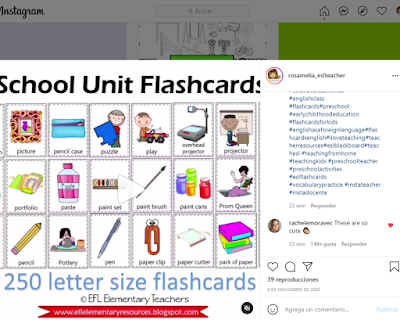
Picture
Dictionary. Hand in the 3 pages for making the picture
dictionary. It is a good idea to do this in groups. This is a cut and paste
activity.
I love tracing cards. It is a spelling activity that can be done using the clear plastic sheet. Just as some native language students learn to trace words in Preschool some ESL learners benefits from tracing.
I made another set of tracing cards that can work as coloring cards. Practice coloring the body parts and/or the clothes.
I made a smaller version of the tracing cards to create an accordion book.
First, I glued one card onto another.
Then, I folded all the cards into an
accordion.
I traced the cover onto cardboard to make the
other part of the book. I glued the first page onto the cover and the last one
onto the cardboard.
Just a worksheet
to place all the words in ABC order.
Spelling Bingo is always a fun game to play. Use the small cards or the Big Flashcards to call the Bingo words. Students just write a playing word in each part of the spinner. They have to cross out the word that is being called if they have it.
If Spelling Bingo is not enough. Try Spelling Scrabble. I added the Scrabble letters. I printed them onto Halloween colored paper, I chose orange and purple. I did my example using the puppets, you can use any of the small cards in the resource.
I also made worksheets with all the Halloween Characters without the face parts and for the students to color the clothes items.
Teacher: This is Dracula. He has green eyes, a small
nose and funny mouth.
Students draw as indicated.
Students draw as indicated.
You
can also dictate how he is dressed or have them color the clothes and then
describe his clothes.
Students: Dracula is wearing a black and red cape,
gray pants and brown shoes.
I made all the characters into puppets using toilet paper rolls. Here are just a few and made a haunted house, it comes in two pages which you will have to glue to make a big one. I printed mine onto orange cardboard and colored the door, the windows and roof to review parts of the house.
Teacher:
What color is the door?
Students:
It’s brown!
Use
the puppets to review the words.
Teacher: Who is he?
Students: He is the Mummy!
Teacher: Who is she?
Students: She is the Witch!
I
also used the puppets to do prepositions practice.
Teacher: Where is the Devil?
Students: She is in front of the Haunted House!
Teacher:
Where is Frankenstein?
Students:
He is behind the Haunted House!
Teacher: Where is the Witch?
Students: She is in the Haunted House!
Or
have the students write about where the characters are.
A game board for those minutes of free play!
I taped an opened clip behind each game piece
to make it stand as a marker.
Please follow me! Leave your comments. Ask me
anything related to the product.


























































